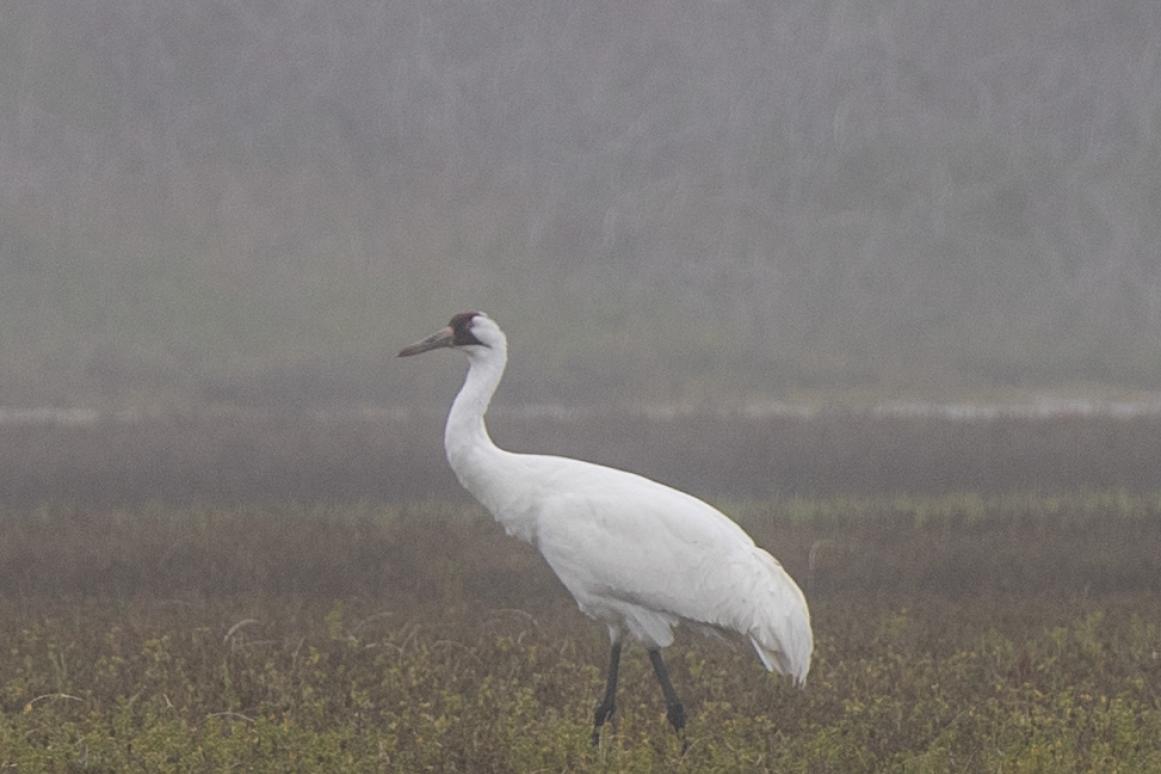Dr. Dale Gawlik Part of Federal Team Working to Recover Whooping Crane Population

Dr. Dale Gawlik, HRI Chair for Conservation and Biodiversity at the Harte Research Institute for Gulf of Mexico Studies (HRI) at Texas A&M University-Corpus Christi (TAMU-CC), is part of a federal working group dedicated to recovering endangered whooping crane (Grus americana) populations.
The whooping crane was among the first bird species listed as an endangered species in the earliest drafts of the Endangered Species Act after their populations plummeted to only about 20 individuals in the 1940s due to habitat loss and hunting. The U.S. Fish and Wildlife Service’s (USFWS) Whooping Crane Recovery Plan Development Team is working to update management actions that will help crane populations increase to their recovery targets. Currently there are around 700 wild whooping cranes in the world. The Texas Coastal Bend is one of the main wintering grounds for the endangered species.
Gawlik’s research, along with the work of many others, has also contributed to the proposed delisting of a different large white wading bird, the wood stork (Mycteria americana), from the USFWS federal list of Endangered and Threatened Wildlife.
Gawlik says that while there are some similarities between whooping cranes and wood storks, he attributes greater genetic diversity and adaptability of the wood stork to its proposed delisting and recovery.
“Both species saw declining populations, and both were listed as endangered,” Gawlik says. “But all whooping cranes were descendants from only six to eight individuals and problems with their populations were recognized in the 1930s. Wood storks were at the risk of extinction, but they were never at the level of whooping cranes.”
Gawlik says that wood storks were first listed as endangered in 1984 but researchers quickly saw that they were more adaptable to changing habitats and there were more of them, offering a wider genetic diversity across their expanding range. Prime whooping crane habitat – freshwater wetlands, grasslands, and coastal marsh - has been over-exploited for many years, but wood storks historically lived in more remote places in Florida, such as the Everglades, that aren’t as hospitable for people, leaving their habitat relatively intact.
According to the U.S. Department of the Interior, the wood stork breeding population has doubled to 10,000 or more nesting pairs and expanded its range north to Georgia, South Carolina, and North Carolina. Wood storks have more than tripled their number of nesting colonies from 29 to 99 in their expanded range.
Through continued collaboration among conservation organizations, government agencies, and researchers, Gawlik is cautiously optimistic for the future of both whooping cranes and wood storks.
Those interested can learn more about HRI’s Conservation and Biodiversity lab and their work with waterbirds here:
